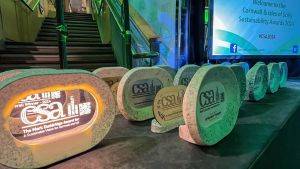Holborn Moss
Introduction
Holburn Moss is an example of a raised mire at the dry end of the range of variation, with its raised dome remaining in a semi-natural condition.
Description
Holburn Moss extends across 1,600 metres and the visible raised dome to the west of the site has peat depths exceeding 10 metres. Peat formation was estimated to have begun 7,000 - 7,500 years ago in an area that was previously open water and fen vegetation.
The moss itself is in a rain shadow created by the nearby Cheviot Hills and Southern Uplands of Scotland, meaning it is relatively dry. This is reflected in the vegetation, with heather Calluna vulgaris, hare's-tail cottongrass Eriophorum vaginatum and common cottongrass E. angustifolium dominating. Sphagnum cover is patchy.
The catchment slopes around the peat body include dry heathland, grassland with bracken and occasional scrub. Large numbers of greylag geese roost n Holburn Lake (2% of NW European population), leading to its designation as an SPA.
Project Name: Holborn Moss
Organisation / Lead partner: Northumberland Wildlife Trust
Location: Lowick, Northumberland
Approximate area covered: 130 ha
Conservation Status: Site of Special Scientific Interest (SSSI), Special Protection Area (SPA), Nature Reserve (NR), RAMSAR site
Predominately: Lowland
Peat Habitats: Lowland raised bog
Project Type: Management










